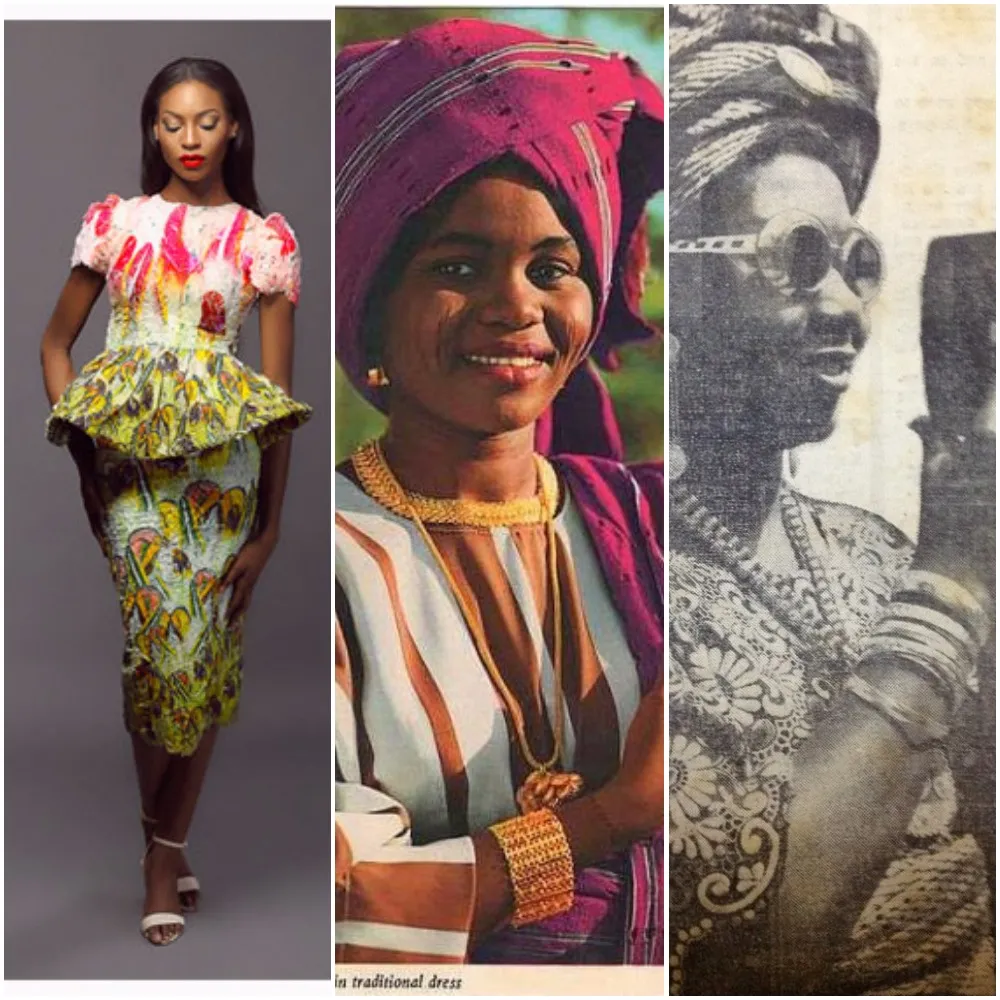
Fashion in Nigeria has always been more than just clothing—it’s a celebration of culture, creativity, and individuality. As we take a trip down memory lane for Throwback Thursday, let’s explore the iconic fashion trends that have defined each era in Nigeria’s vibrant history.
The 60s & 70s: Bell-Bottoms and Aso Oke Glam
The 1960s and 70s were all about bold statements and traditional pride. This era saw the rise of bell-bottom trousers, a trend that dominated global fashion and found its place in Nigeria’s youth culture. Paired with vibrant shirts and platform shoes, this style screamed confidence and flair.
Meanwhile, traditional attire took center stage at weddings and celebrations. Aso Oke, the handwoven fabric adorned with intricate patterns, became a must-have for glamorous occasions. Women accessorized their outfits with towering geles (headwraps) that added an extra touch of elegance.
The 80s: Puff Sleeves and Ankara Explosion
The 80s were a golden age for Ankara fabric. Designers experimented with bold, colorful patterns to create eye-catching styles for both men and women. Puff sleeves became a defining feature of women’s dresses, symbolizing power and femininity. Accessories such as chunky gold jewelry and oversized sunglasses completed the look.
For men, the buba and sokoto (traditional top and trousers) got a modern twist, often styled with sleek loafers and patterned caps. The fusion of traditional and modern styles defined this decade.
The 90s: Baggy Jeans and Jelabiya Cool
Streetwear took over in the 1990s, with baggy jeans, oversized T-shirts, and snapback caps becoming the go-to look for young Nigerians influenced by global hip-hop culture. Jelabiya (a loose-fitting traditional robe) also became a casual yet stylish choice, bridging the gap between comfort and tradition.
Footwear made a statement too. Nike Air Jordans and Timberland boots were a must-have for the cool kids, while slippers made from leather or raffia were a staple in local communities.
The 2000s: Rhinestones and Low-Rise Everything
The early 2000s brought a love for all things shiny and daring. Rhinestones adorned dresses, tops, and even jeans, adding sparkle to every outfit. Low-rise jeans paired with cropped tops or halter necks became the ultimate party look for women.
Traditional fashion also evolved, with modern takes on agbada (a flowing wide-sleeved robe) for men and creatively styled Ankara dresses for women. Events like Owambe parties became a runway for showcasing the latest designs.
Today: Afrocentric Meets Global Chic
Modern Nigerian fashion is a blend of Afrocentric styles and global influences. Designers like Deola Sagoe and Mai Atafo have taken traditional fabrics like Ankara, Adire, and Aso Oke to the global stage, creating contemporary outfits that celebrate Nigerian heritage.
Streetwear has also made a massive comeback, with local brands redefining urban fashion. Sneakers, branded T-shirts, and joggers are now staples in Nigerian wardrobes. And let’s not forget the dominance of social media, where influencers and celebrities showcase innovative ways to style traditional and modern pieces.
Conclusion: A Legacy of Style
From the bell-bottoms of the 70s to today’s Afrocentric chic, Nigerian fashion has always been a reflection of its people—bold, creative, and unapologetically unique. Each decade tells a story of evolution, blending tradition with contemporary trends. As we look back, we’re reminded that Nigerian fashion is not just a trend but a legacy that continues to inspire the world.


